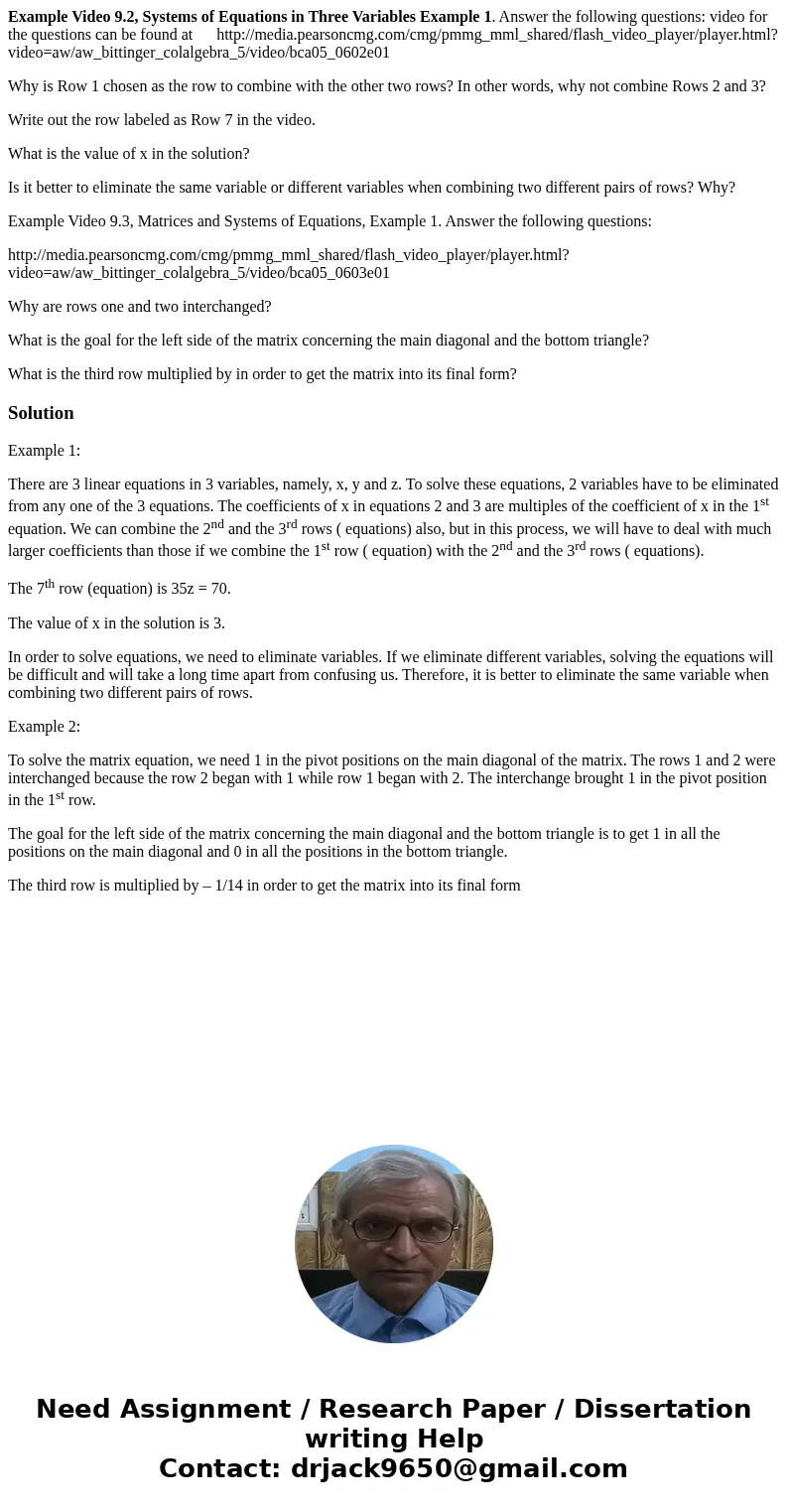Example Video 92 Systems of Equations in Three Variables Exa
Example Video 9.2, Systems of Equations in Three Variables Example 1. Answer the following questions: video for the questions can be found at http://media.pearsoncmg.com/cmg/pmmg_mml_shared/flash_video_player/player.html?video=aw/aw_bittinger_colalgebra_5/video/bca05_0602e01
Why is Row 1 chosen as the row to combine with the other two rows? In other words, why not combine Rows 2 and 3?
Write out the row labeled as Row 7 in the video.
What is the value of x in the solution?
Is it better to eliminate the same variable or different variables when combining two different pairs of rows? Why?
Example Video 9.3, Matrices and Systems of Equations, Example 1. Answer the following questions:
http://media.pearsoncmg.com/cmg/pmmg_mml_shared/flash_video_player/player.html?video=aw/aw_bittinger_colalgebra_5/video/bca05_0603e01
Why are rows one and two interchanged?
What is the goal for the left side of the matrix concerning the main diagonal and the bottom triangle?
What is the third row multiplied by in order to get the matrix into its final form?
Solution
Example 1:
There are 3 linear equations in 3 variables, namely, x, y and z. To solve these equations, 2 variables have to be eliminated from any one of the 3 equations. The coefficients of x in equations 2 and 3 are multiples of the coefficient of x in the 1st equation. We can combine the 2nd and the 3rd rows ( equations) also, but in this process, we will have to deal with much larger coefficients than those if we combine the 1st row ( equation) with the 2nd and the 3rd rows ( equations).
The 7th row (equation) is 35z = 70.
The value of x in the solution is 3.
In order to solve equations, we need to eliminate variables. If we eliminate different variables, solving the equations will be difficult and will take a long time apart from confusing us. Therefore, it is better to eliminate the same variable when combining two different pairs of rows.
Example 2:
To solve the matrix equation, we need 1 in the pivot positions on the main diagonal of the matrix. The rows 1 and 2 were interchanged because the row 2 began with 1 while row 1 began with 2. The interchange brought 1 in the pivot position in the 1st row.
The goal for the left side of the matrix concerning the main diagonal and the bottom triangle is to get 1 in all the positions on the main diagonal and 0 in all the positions in the bottom triangle.
The third row is multiplied by – 1/14 in order to get the matrix into its final form

 Homework Sourse
Homework Sourse